Environmental Expressionist
I have marvelled at the sense of movement looking up into the windswept trees and grasses, and the dark solitude of the groves looking deep within the forests of this sacred and magical journey.
My paintings often incorporate text to assist the viewer in connecting with the emotional and intellectual premise of my expressions in an attempt to understand the outcomes of the unbalanced pressures placed on the natural environment, and the perception of ownership, fragility and destiny. The use of diptyches and triptyches also relates to my spiritual investigation as the panels herald back to the altar art of the Renaissance, where the artists painted emblems of both this world and eternity. In the top and bottom diptyches I am being a little inventive by elongating the segmented views. Each painting trying to be complete by itself, but more poweful as a whole. I am trying to create a conceptual hierarchy and a tension in the viewer by seeing the ‘real’ world but inferring a ‘spiritual’ realm.
My work has always represented the land as ‘Mother Earth’, a living entity, to create empathy, and help the viewer reflect on the ‘hidden’ and ’surface’, aspects of our perceptions about what we see, understand and experience around us. I have focused on ‘Erosion’, ‘Forest Management’ and Black Saturday in my ‘Fire Series’, and recently began a new series called ‘Reenchantment’.
In my ‘Reenchantment Series’ my core concept still remains the belief that the intimate relationship we have with the environment is built into the human psyche. However, I feel that since the Black Saturday fires I am even more interested in understanding the basic need that humans have to ask questions about the world, as the enquiry also becomes an internal question about oneself, and the eternal “Who am I?” I feel that our increasing desire to protect the environment and questioning seeing the natural world as only useful raw materials for our use, is an enlightening investigation and one which makes us see nature once again as magical and sacred.
My new Sepia Series explores the spiritual aspect of nature and delves into the psychological patterns or archetypes within the psyche which are projected onto nature. My core concept still remains the belief that the intimate relationship with the environment is built into the human psyche. However, I feel that I need to examine the teachings of C.G Jung Depth Psychology to examine the phenomena of the unconscious mind as Jung believed that the unconscious is the medium through which spiral experiences occur. My fascination with trees relates to the mythological traditions of the ‘World Tree’ which is a contact between the mundane and the divine. Similar spiritual connections are also felt with sacred groves and are both common features in ancient religious traditions. These are only two archetypal symbols that are found in mythology in dreams and fantasies and are found through time and cultures. My fascination with Mother Nature and the positive nurturing and the destructive effect is just one of the archetypes projected onto nature.
Indeed, for me I project the forms of striving branches, contorted forms of struggle and mystical groves of a spiritual yearning for the ‘the other’ testing and guiding us to connect with nature to experience and strive for balance and wholeness both within ourselves and in the world around us. I feel that our increasing desire to protect the environment and questioning seeing the natural world as only useful raw materials for our use, is an enlightening investigation. I feel that this spiritual bond is a vital connection that helps us experience our true selves, others and our environment.
To help me express this spiritual journey I have used the Sepia palette to link into the Zen Buddism expression found in Asian monochromatic ink paintings to emphasise the simplicity and the importance of the natural world. My paintings have changed to reflect a freer more ‘natural’ style with the sepia palette expressing a sense of melancholy, loneliness, naturalness, and age that stimulates the mind and emotions. In the Chinese landscape artist expression of old trees, rocks etc are emblems of their character and spirit. The landscape are not only representations of the external world but more of the mind and heart of the artist. Sepia tones gives paintings a classic, old fashioned feel, often romantic dreamy feel. I also like to link with the idea of sepia photographic prints being more durable, slowing down the ageing process and an enhancer of the archival qualities. My paintings capturing a moment in time and reflection.
My Sepia Series has taken me on a tour away from views around my home, but also on the views of the many walks leading to the dramatic beaches around Wonthaggi. The wonder at seeing the glorious outstretching branches struggling to reach for the light, the contorted trees surviving the storms and wind, to the sacred quiet groves as one winds past the old ruins of the Wonthaggi Coal mines and the regrowth of tangled forests claiming back the land and then moving along the protected paths to the beach and the majestic cliffs withstanding this wild coast. I have marvelled at the sense of movement looking up into the windswept trees and grasses, and the dark solitude of the groves looking deep within the forests of this sacred and magical journey.



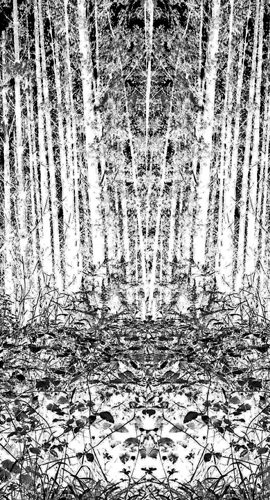
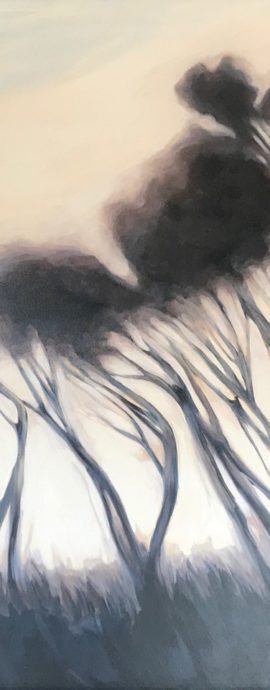
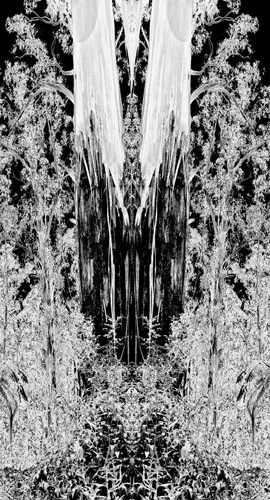
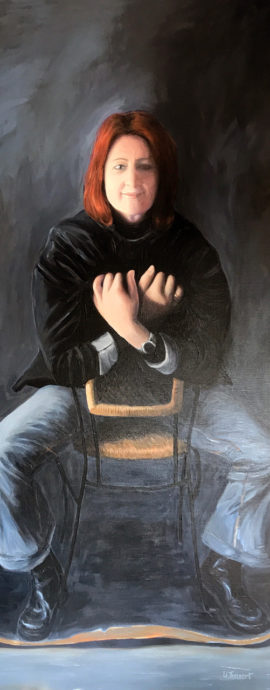
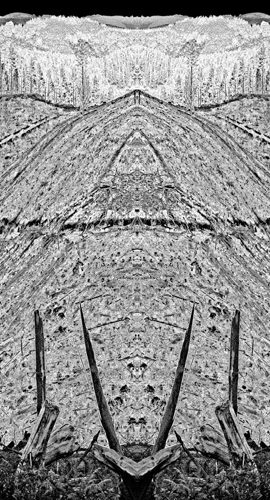
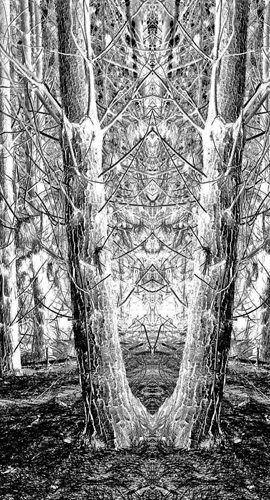
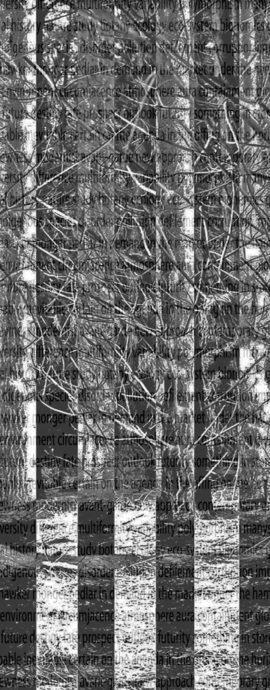
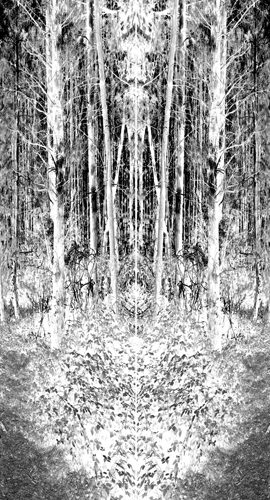
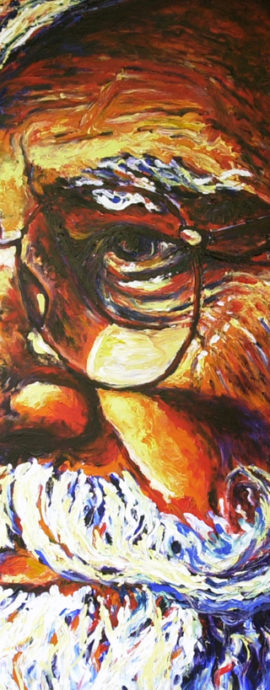
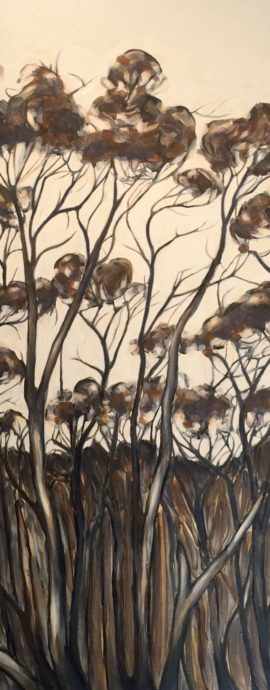
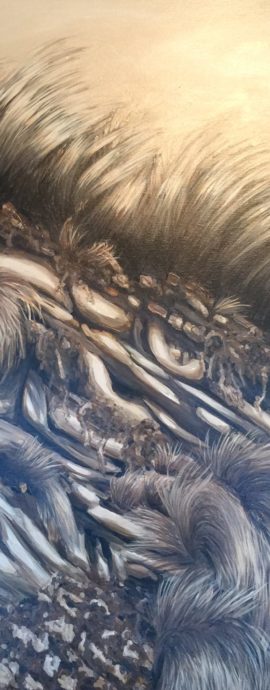
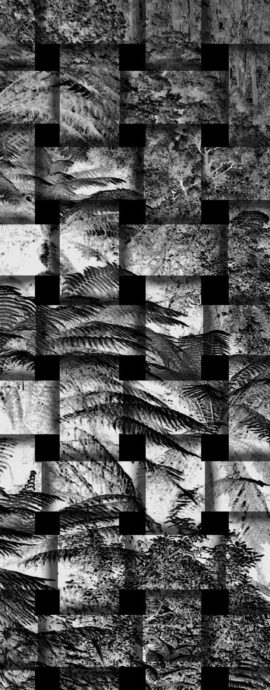
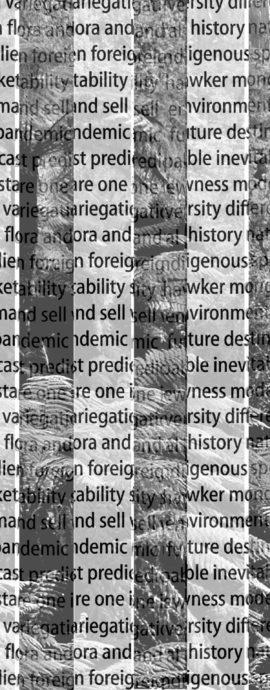
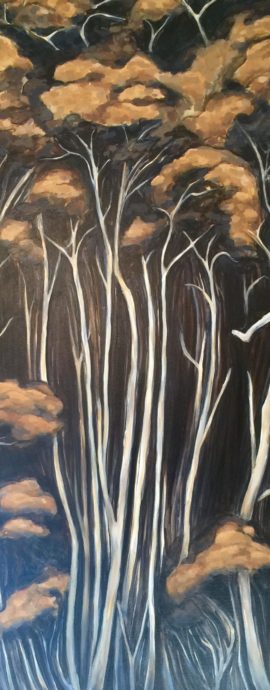
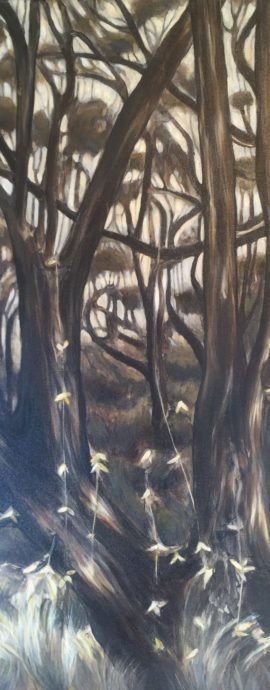
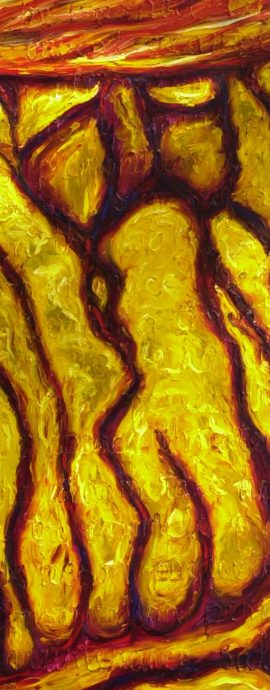
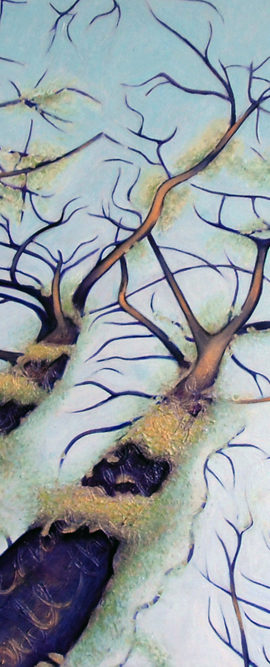
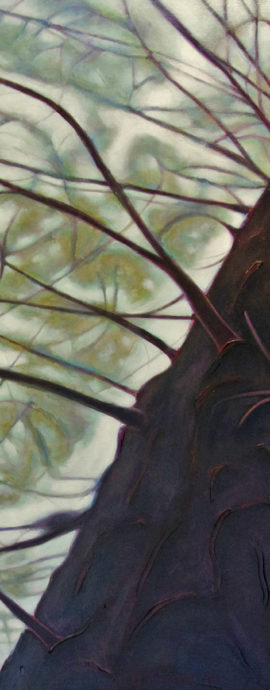
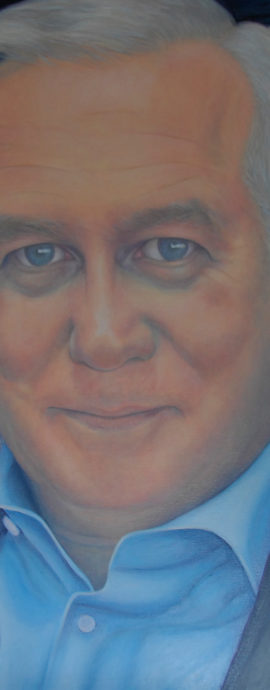
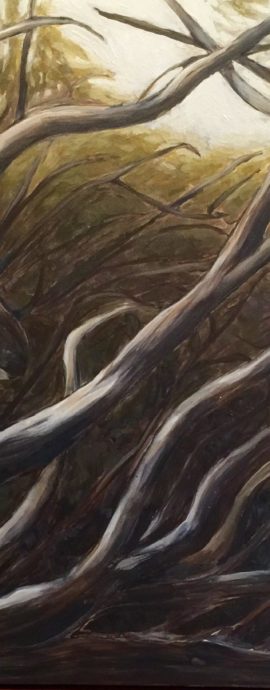
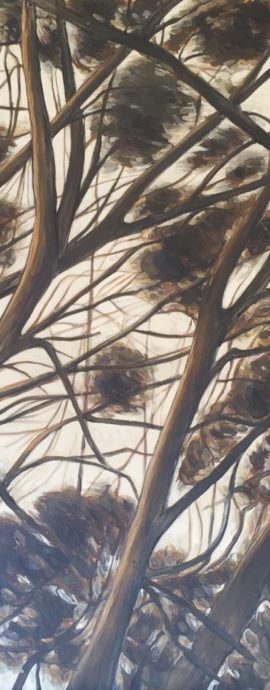
Leave a reply